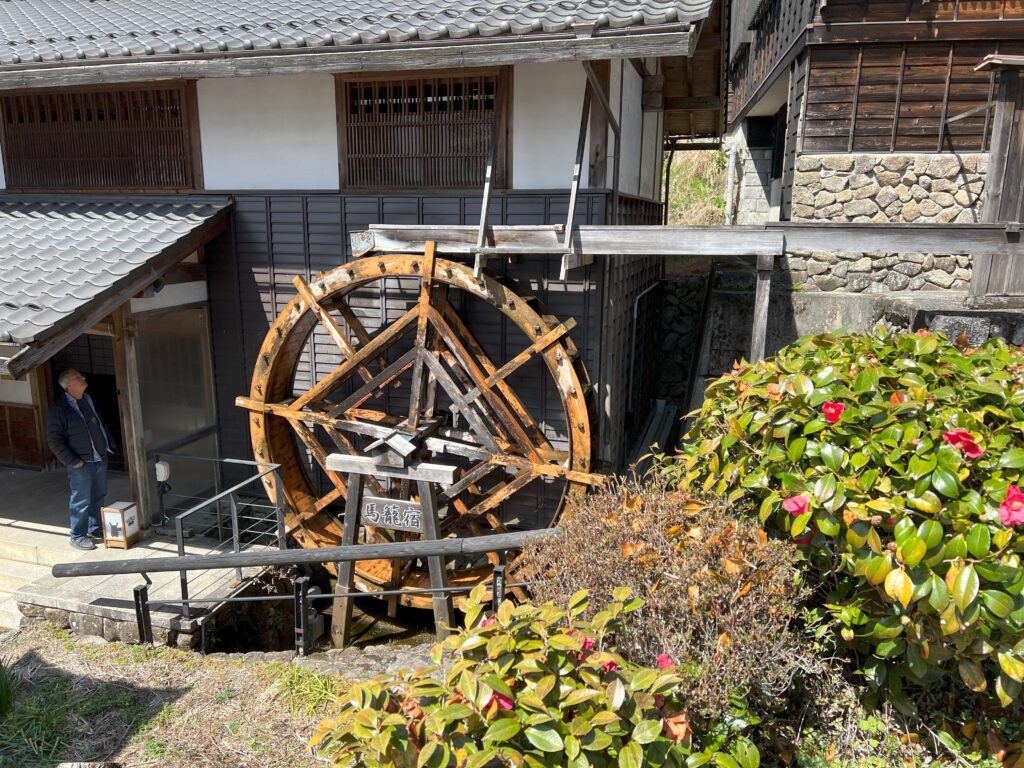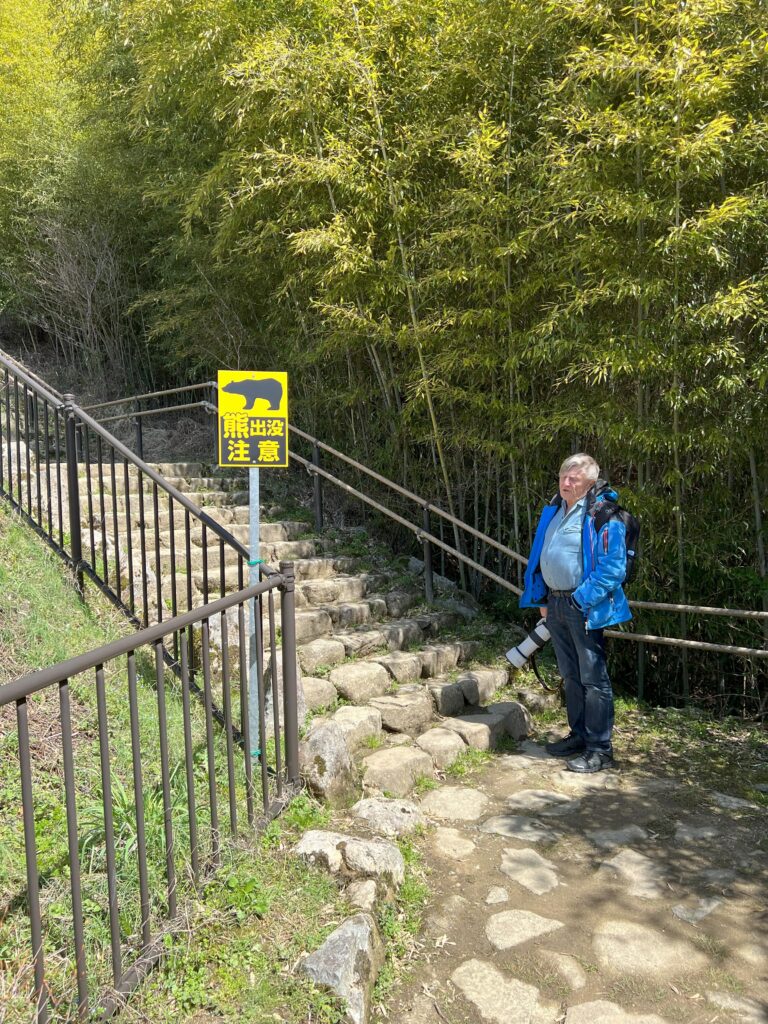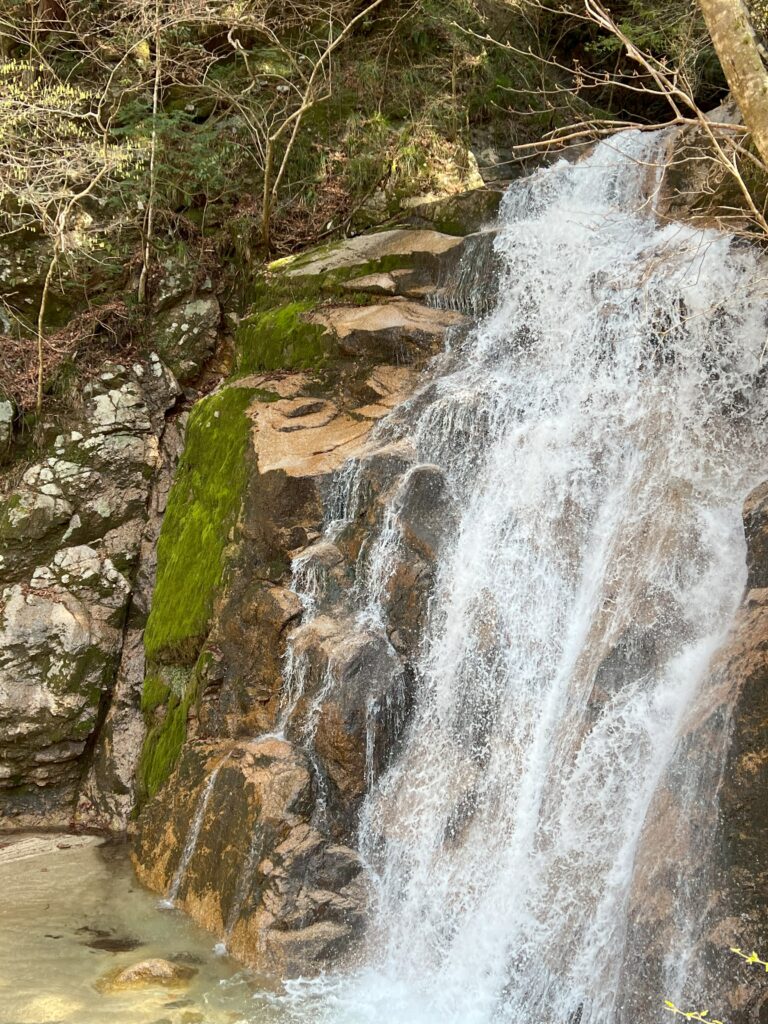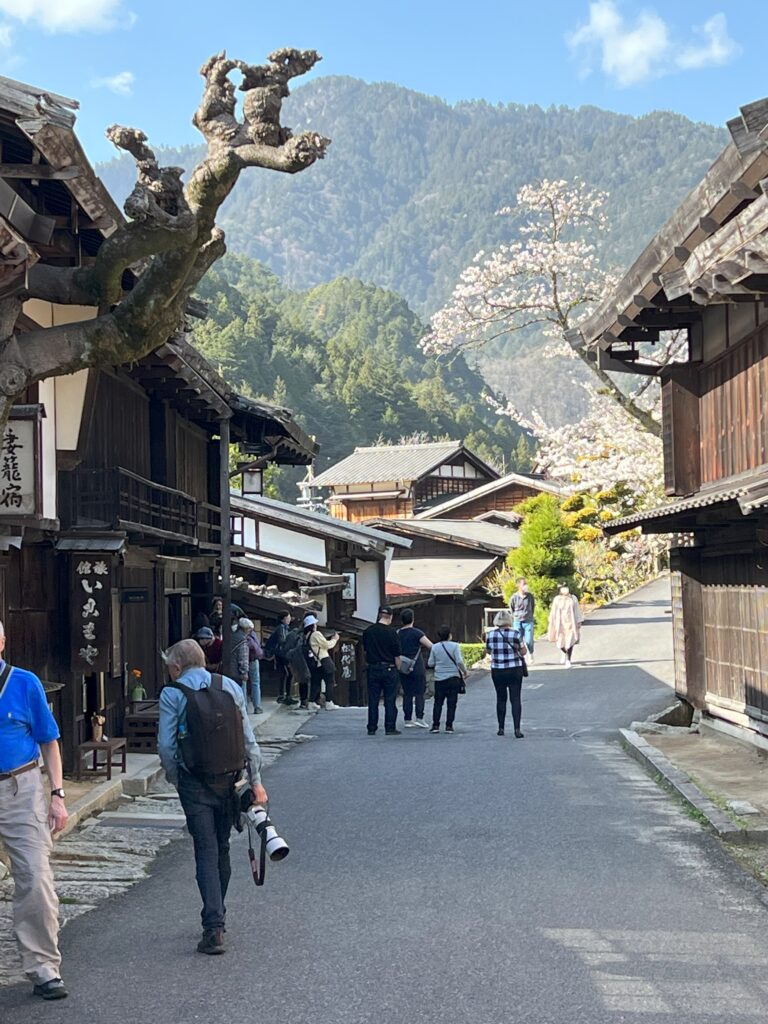
It seems a long drive down the valley that we came up by Shinano train only the day before, the Kiso river snaking below us in a hurry to get down to the open sea. To borrow a line from ‘Out of Africa’ – ‘This water lives in Nagoya’ and is eager to get home. It polishes the same rocks that its ancestors have polished for generations – the smooth chalk-white rocks, small to giant and every size in between. Magome is our destination, and the start of our walk along the Nakasendo Trail.
Long before bullet trains connected Tokyo and Kyoto, travellers used this trail to travel between the two cities, stopping at postal towns along the way to sleep, eat, and rest the horses.
Magome, our first post town, is well-prepared for trekking tourists with gift shops, coffee houses and restaurants stretching along the trail taking us out of the town. It’s immediately uphill, with the pretty Japanese houses lining the way taking advantage of the rushing stream to feed garden water features and turn decorative water wheels. Flowers and blossoms tended with the Japanese attention to detail make it a picturesque start to the walk. There’s a photograph awaiting the taking around every bend of the road.

Out of the town, at the official start to the walk, there’s a large sign in Japanese. The writing means nothing to us but there’s no mistaking the picture of the bear above the writing. OK, we’ll watch out for all the hungry bears along the way.
Bear bells hang every kilometre or so on the route and instructions tell us to ring robustly. This is not intended to scare the bears but simply to announce our presence and avoid a confrontation by startling them. It seems that the same can be achieved, probably more effectively, by talking loudly or singing. I did try a few lines of ‘I love to go a-wandering, along the mountain track’, but it didn’t catch on and so, slightly embarrassed, I ceased. Seems like the hills are no longer alive with the sound of music, must be going out of fashion.
We are in the great outdoors where, by European standards, it would be OK to ‘go’ behind an appropriate tree. But this is Japan and the ‘Rules of the Trail’ say ‘Please be sure to use the bathroom before entering the mountain’ and ‘If you need to go to the bathroom, use the toilet facilities’. Fortunately, toilets have been thoughtfully positioned at multiple strategic points along the mountain.
Our walk progresses and there seem to be as few birds in this great outdoors as there are bears. But plenty of humans. Some humans pass us with big smiles, friendly waves, and snatches of conversation. Other humans keep their heads down, avoid eye contact and pretend we are not there -as if rehearsing a potential bear encounter.

The watershed comes relatively soon after setting out, and from then on we are following the streams gently downhill. We come to a rest area where people going in both directions seem to congregate for a while and swap stories. Green tea is provided in a barn-like construction – or a ‘tea house from the mid-Edo period’ as the guide describes it. The tea is free of charge, but a collection box encourages us to make a contribution. An old Japanese proverb says ‘Nothing more costly than item that has no price’. The tea provider clearly knows this proverb well.
We’re well on our way now following a stream through dense forest and arriving at the twin Otaki and Metaki waterfalls. A sign tells us that Otaki is male, and Metaki female. It’s the first time we’ve encountered this male and female waterfall concept so it invites some explanation:-
Miyamoto Musashi, a famous samurai warrior and a young lady by the name of Otsu are travelling along the Nakasendo Trail. They are consumed by lust, but Otsu is betrothed to another (a friend of Miyamoto) and so they stand under the different waterfalls to cool off!

We didn’t feel a similar need to cool our passions, and so we moved on, finally arriving at Tsumago, our destination post town.

It seems like geographical trickery that we have arrived at a point 250 metres below our starting point at Magome, and yet we are some 15km further up the Kiso valley, so our journey back to Kiso Fukushima is remarkably fast.
Totals for the hiking day:
Kilometres : 8
Bears: 0
Birds: 2
Humans: 87